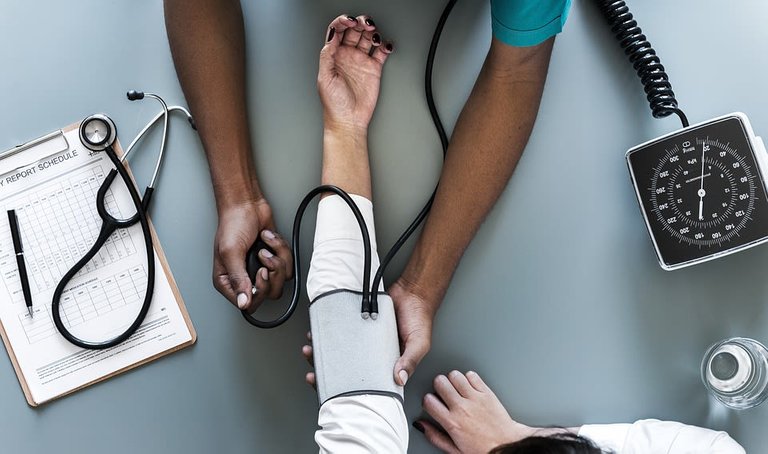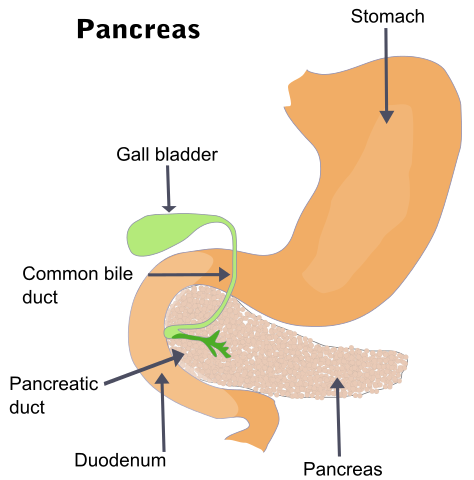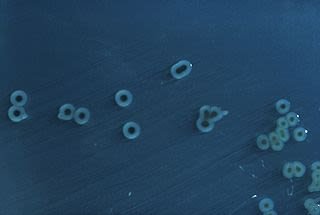HEALTH AND DISEASES: Introducing disease and how disease-causing factors influence each other.
According to the BMJ News, currently,
a man living in the UK can expect to live until he is 87; a woman until she is
89. Just 120 years ago things were very different: in 1900, average life
expectancy was between 45 and 55. So, what accounts for this massive change?source
If you ever take a look around cemeteries or churchyards you will notice some people from the 1800s did live to their 70s or 80s or beyond the maximum age to which a human being can live does not seem to have extended very much in the past 120 years. What has changed is the likelihood of dying when young. Infant mortality, the number of children under 5 that did not survive, was very high in the 1900s, Then, about 150 children in every 1 000 died at birth and perhaps another 200 did not make it to their 5th birthday. Today, less than 20 children in every 1000 die before they are 5. The average life expectancy has increased because of factors such as better living conditions, better medicine and better diet.source

Today, we know that these sorts of environmental factors combine with our genes to determine how long we live. Researchers have been studying very long-lived people to see if they can identify which genes are important. Recently, a cluster of genes on chromosome 4 was found to be more common in people who reached the age of 90, but finding out exactly what these genes do is likely to take time.source
INTRODUCING DISEASE
Before looking at how the body defends itself against disease, it is important to consider what kinds of disease there are.
The body’s defence system functions mainly to protect us from bacteria, fungi, viruses and parasites that try to infect various tissues and organs. Infectious diseases are also called communicable diseases as they can pass from one person to another.
Non-communicable diseases include degenerative diseases such as arthritis and Alzheimer’s, and lifestyle diseases such as heart disease and cancer, particularly lung cancer, which is related to smoking.
A third type of disease is genetic disease. Genetic diseases, such as cystic fibrosis and sickle cell anaemia, result from a faulty gene that is inherited from a parent.source
HOW DISEASE-CAUSING FACTORS INFLUENCE EACH OTHER
A few diseases can be put definitely into only one of the categories just described. Other diseases are a result of an interplay between different factors. People who inherit some specific genes can be at an increased risk from some cancers, particularly those that affect the colon or the breast. Viruses seem to be involved in the development of cervical cancer.
Degenerative diseases can occur earlier in life, and their appearance can be related to lifestyle. Late-onset diabetes, for example, is more likely in people who are overweight. People can compensate for a genetic background that makes it more likely that they develop heart disease by changing their lifestyle – by eating a healthy diet and taking regular exercise, they might avoid heart disease.source
HOW DISEASES ARE IDENTIFIED
Before a doctor can treat a disease effectively, he or she must identify the condition that is making the patient ill. Someone usually goes to the doctor with a collection of symptoms. Symptoms are indications of a disease that are noticed by the patient. Signs are indications of a disease that are picked up by a doctor but not necessarily by the patient.
For example, a woman finds that she gets tired very easily. Her husband thinks she looks rather pale and she notices that she gets out of breath when she exerts herself. The doctor observes the patient and listens to her describing these symptoms, and suspects that she is suffering from anaemia. Anaemia is not a disease itself, but it has a cause. It could be due to:
- a shortage of iron in the diet – iron is a important part of haemoglobin molecules;
- loss of blood – this might result from heavy periods or perhaps an ulcer that bleeds constantly;
- destruction of red blood cells caused by sickle-cell anaemia, an inherited condition. An affected person has an abnormal form of haemoglobin that transports oxygen with reduced efficiency. The red blood cells of someone with this condition have a shorter life span than normal red blood cells.
The doctor looks for clinical signs that might show which one of these is most likely. Treatment can begin only when an accurate diagnosis has been made.source
IDENTIFYING PANCREATITIS
The pancreas is an important organ located just below the stomach. It has two main functions. It produces the hormones insulin and glucagon that regulate blood glucose concentration, and it secretes digestive enzymes. The enzymes break down different food molecules: trypsin acts on proteins, lipase on fats and amylase breaks down starch to maltose.

Pancreas. training.seer.cancer.gov, Public Domain
Pancreatitis is a severe inflammation of the pancreas, caused when the enzymes that normally break down food in the intestine start to break down and destroy the tissue of the pancreas itself. It can be acute (when it comes on suddenly) or chronic long term), Pancreatitis is common in chronic alcoholics
Pancreatitis can be difficult to identify. The pancreas is in the first loop of the small intestine and is close to the liver and stomach, so pain in this area could be caused by any of pancreatitis, liver disease, stomach ulcers or gallstones. A correct diagnosis is vital, and this is where biochemical tests come in handy.
If the pancreas tissues are damaged rapidly, the enzymes in the cells escape into the blood. Tests involve checking whether lipase and amylase are in a blood sample. If they are, it is a good indication that the patient has acute pancreatitis.
If the condition is long term, however, the pancreas tissue is more slowly and progressively destroyed, and the ability to secrete enzymes declines gradually. This is chronic pancreatitis and is identified by measuring the amounts of enzymes in the patient’s faeces.source
DIAGNOSING PHENYLKETONURIA: AN INHERITED ENZYME DEFICIENCY
Phenylketonuria (PKU) is an inherited condition that affects approximately one in every 10 000 people. All new-born babies in the UK are tested for PKU. In the heel or Guthrie test, a small sample of blood is taken from the heel of the baby and the sample is tested for the presence of phenylalanine, an amino acid.
In a healthy baby, phenylalanine is converted into tyrosine by the tyrosine phenylalanine hydroxylase. This enzyme is missing in a baby with PKU, and phenylalanine and other metabolic substances made from it build up in the baby’s blood. These subatances interfere with brain development, so it is very important that the condition is identified as soon as possible after birth and then treated with a low phenylalanine diet.source
LOOKING INSIDE THE BODY
Sometimes, the only way to make an accurate diagnosis is to look inside the body. Cutting it open is one way, but there are always risks with surgery. The risks are rare, but it is safer to use non-invasive methods where possible. Several techniques now produce images of what is going on inside the body. The images sometimes look very strange to the untrained eye, but a skilled technician or doctor can interpret them.source
X-rays
X-rays have a much shorter wavelength than visible light. They penetrate different tissues in the body to different extents. Although they are most often used to look at bones and teeth, X-rays can show other organs if a suitable contrast medium is used. For example, if someone drinks a barium meal (a solution containing salts of the heavy metal barium), the barium absorbs the X-rays and details of the stomach and small intestine show up on the final image of X-rays taken shortly afterwards. The disadvantage of X-rays is that they damage DNA. For this reason, X-rays are not used to examine the reproductive organs or to scan the developing baby inside a pregnant woman. The people who use X-ray equipment have to take safety precautions.source
Ultrasound
Ultrasound is high-frequency sound, so high that the human ear cannot detect it. An ultrasound beam passes into the body and bounces off dense tissue. The reflected waves produce an image that shows internal organs in great detail. Unlike X-rays, ultrasound does not damage DNA and so can be used to check the development of a baby in the uterus.source
Endoscopy
An endoscope is a long tube with a light At one end and a means of displaying an image at the other, It can be used to examine the inside of hollow body parts such as the oesophagus and stomach or the trachea and bronchioles. Many modern endoscopes rely on fibre optics. This means that they are small in diameter and flexible. Endoscopes are used for a variety of purposes such as inspecting the external ear and eardrum for signs of damage or infection, or for looking at the inside of the gut.source
INFECTIOUS DISEASE
Infectious diseases are caused by microorganisms that invade the body-including bacteria, viruses, parasites and fungi.
Microorganisms are very common in and on the human body. There are more bacteria living on your skin than there are people in the world. Most bacteria cause you no harm; the few that do are called pathogens. It is important to find out which microorganisms are responsible for which diseases because, until the infection has been identified, it is difficult to give effective treatment.source
The nineteenth-century biologist Robert Koch put forward a set of basic principles for identifying a pathogen: these principles are known as Koch’s postulates.
- The microorganism must always be present when the disease is present. It should not be present if the disease is absent.
- It should be possible to isolate the microorganism from an infected host and grow it in culture.
- When cultured microorganisms are introduced into a healthy host the disease should develop.
- It should be possible to isolate the microorganism from the new host.
By following these principles, researchers have identified the microorganism responsible for many diseases. But there are problems in applying Koch’s ideas, especially when humans are involved. For example, it would be unethical to introduce a suspected pathogen to humans to see whether or they developed a disease. In addition, some people fail to show disease symptoms after being infected. They might be resistant to that disease or they might be carriers who can pass on the disease to others, even when they appear disease-free themselves.source
Typhoid fever is a severe disease of the digestive system caused by the bacterium Salmonella typhimurium. In carriers, people who are infected but show no signs of the disease, the bacteria living in the gut pass out of the body in the faeces. Typhoid Mary, who lived in New York in the twentieth century was a carrier of Salmonella typhimurium. She gained a bad name, because unwittingly, she shared her infection with many of the people she came into contact with. While she remained the picture of health, they sickened and died.source

Salmonella typhimurium. Centers for Disease Control and Prevention, Public Domain
HOW DO MICROORGANISMS GET INTO THEIR HOST
Your body provides an ideal environment for pathogens to multiply rapidly. It’s warm and wet and there are plenty of nutrients. Fortunately for you, your skin prevents most of them taking advantage of the ideal conditions inside. The outer layer of skin consists of dead, dry cells made of an indigestible protein called keratin. Microorganisms find it difficult to penetrate this layer to enter the body, They are more likely to use the slightly easier entry route offered by the mucous membranes of the breathing system, the gut, the urinary system or the reproductive system.
In order to cause disease, pathogens must be transmitted from one person to another. Many of them cannot survive for very long outside the body. The main transmission routes are:
- through the air in droplets of mucus or saliva:
- in contaminated food or water;
- by sexual contact with another person;
- through breaks in the skin.source
Airborne infections
Many microorganisms are transmitted through the air. These include influenza, colds and measles, which are all caused y viruses; and the bacterial diseases tuberculosis, diphtheria and meningitis. When an infected person coughs, sneezes or even just breathes out. Tiny droplets of mucus and saliva are expelled. These droplets carry microorganisms with them. The larger ones fall to the ground rapidly, but the smaller ones can remain suspended in the air for long periods of time. In poorly ventilated, crowded conditions, diseases such as influenza can spread very rapidly.source
Contaminated food and water
According to the WHO, every year, over 2.2 million people die from infections that cause diarrhoea.source Many victims are small children. In Bangladesh, three out of five children under five die from infant diarrhoea. The microorganisms responsible spread in water or food contaminated by human faeces.source
Direct contact
Direct contact between the skin of one person and that of another is unlikely to produce infection. Sexual contact is another matter, however. Microorganisms that spread like this include the human immunodeficiency virus (HIV), the virus that causes genital herpes, the bacteria responsible for gonorrhoea and syphilis and the yeast (single-celled fungus) Candida that causes thrush.source
Through the skin
The outer layer of the skin consists of tough cells that protect the body very effectively against infection. But this layer can be broken, and cuts and grazes form an entry point for bacteria. For example, tetanus is a serious disease that affects the nervous system. The bacteria that cause tetanus are common in soil and can enter the body through puncture wounds and animal bites.
Mosquitoes, ticks and lice all feed by puncturing the skin. In doing this, they transmit microorganisms directly into the blood. One of the most important insect-borne diseases is malaria, which is transmitted by Anopheles mosquitoes.source
Thanks for reading.
REFERENCES
Infections through direct contact
https://www.ncbi.nlm.nih.gov/books/NBK209710/
https://www.medicinenet.com/script/main/art.asp?articlekey=7105
https://www.ncbi.nlm.nih.gov/pmc/articles/PMC3741240/
https://www.who.int/water_sanitation_health/diseases-risks/diseases/diarrhoea/en/
https://en.wikipedia.org/wiki/Phenylketonuria
https://en.wikipedia.org/wiki/Pancreatitis
https://www.hhmi.org/news/does-chromosome-4-hold-secret-human-longevity
https://ourworldindata.org/life-expectancy
https://www.bmj.com/content/364/bmj.l1123
This post has been voted on by the SteemSTEM curation team and voting trail. It is elligible for support from @curie.
If you appreciate the work we are doing, then consider supporting our witness stem.witness. Additional witness support to the curie witness would be appreciated as well.
For additional information please join us on the SteemSTEM discord and to get to know the rest of the community!
Thanks for having added @steemstem as a beneficiary to your post. This granted you a stronger support from SteemSTEM.
Thanks for having used the steemstem.io app. You got a stronger support!